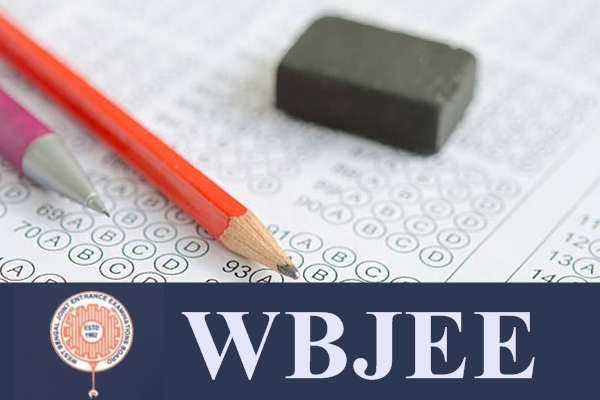



|
Tweet
Pin
It
|
Algebra
A.P., G.P., H.P. : Definitions of A. P. and G.P.; General term; Summation of first n-terms; A.M.and G.M.; Definitions of H.P. (only 3 terms) and H.M.; Finite arithmetico-geometric series.
Logarithms : Definition; General properties; Change of base.
Complex Numbers : Definition and properties of complex numbers; Complex conjugate; Triangle inequality; Square root of complex numbers; Cube roots of unity; D'Moivre's theorem (statement only) and its elementary applications.
Quadratic Equations : Quadratic equations with real coefficients; Relations between roots and coefficients; Nature of roots; Formation of a quadratic equation, sign and magnitude of the quadratic expression ax2+bx+c (a,b,c are rational numbers and a ≠ 0).
Permutation and combination : Permutation of n different things taken r at a time (r < n). Permutation of n things not all different. Permutation with repetitions (circular permutation excluded).
Combinations of n different things taken r at a time (r <
n). Combination of n things not all different.
Basic properties.
Problems involving both permutations and combinations.
Principle of Mathematical Induction : Statement of the
principle. Proof by induction for the sum of squares, sum of cubes of
first n natural numbers, divisibility properties like 2 2n
- 1 is divisible by 3
(n >
1), 7 divides 3 2n+1+2 n+2 (n
1).
Binomial theorem (positive integral index) : Statement of the theorem, general term, middle term, equidistant terms, properties of binomial co-efficients.
Infinite series : Binomial theorem for negative and fractional index. Infinite G.P. series, Exponential and Logarithmic series with range of validity (statement only), simple applications.
Matrices : Concepts of m x n (m < 3, n < 3) real matrices, operations of addition, scalar multiplication and multiplication of matrices. Transpose of a matrix. Determinant of a square matrix. Properties of determinants (statement only). Minor, cofactor and adjoint of a matrix. Nonsingular matrix. Inverse of a matrix. Finding area of a triangle. Solutions of system of linear equations. (Not more than 3 variables).
Sets, Relations and Mappings : Idea of sets, subsets, power set, complement, union, intersection and difference of sets, Venn diagram, De Morgan's Laws, Inclusion / Exclusion formula for two or three finite sets, Cartesian product of sets.
Relation and its properties. Equivalence relation - definition and elementary examples, mappings, range and domain, injective, surjective and bijective mappings, composition of mappings, inverse of a mapping.
Probability : Classical definition, addition rule, conditional probability and Bayes' theorem, independence, multiplication rule.
Trigonometric ratios, compound angles, multiple and submultiple angles, general solution of trigonometric equations. Properties of triangles, inverse trigonometric functions.
Co-ordinate geometry of two dimensions
Basic Ideas : Distance formula, section formula, area of a triangle, condition of collinearity of three points in a plane.
Polar coordinates, transformation from Cartesian to polar coordinates and vice versa. Parallel transformation of axes, concept of locus, elementary locus problems.
Straight line : Slope of a line. Equation of lines in different forms, angle between two lines. Condition of perpendicularity and parallelism of two lines. Distance of a point from a line. Distance between two parallel lines. Lines through the point of intersection of two lines.
Circle : Equation of a circle with a given center and radius. Condition that a general equation of second degree in x, y may represent a circle. Equation of a circle in terms of endpoints of a diameter . Parametric equation of a circle. Intersection of a line with a circle. Equation of common chord of two intersecting circles.
Conics : Definition, Directrix, Focus and Eccentricity, classification based on eccentricity.
Parabola : Standard equation. Reduction of the form x = ay2;+by+c or y = ax2+bx+c to the standard form y2 = 4ax or x2 = 4ay respectively. Elementary properties and parametric equation of a parabola.
Ellipse and Hyperbola : Reduction to standard form of general equation of second degree when xy term is absent. Conjugate hyperbola. Simple properties. Parametric equations. Location of a point with respect to a conic.
Differential calculus : Functions, composition of two functions and inverse of a function, limit, continuity, derivative, chain rule, derivatives of implicit functions and of functions defined parametrically.
Rolle's Theorem and Lagrange's Mean Value theorem (statement only). Their geometric interpretation and elementary application. L'Hospital's rule (statement only) and applications.
Second order derivative.
Integral calculus : Integration as a reverse process of differentiation, indefinite integral of standard functions. Integration by parts. Integration by substitution and partial fraction.
Definite integral as a limit of a sum with equal subdivisions. Fundamental theorem of integral calculus and its applications. Properties of definite integrals.
Differential Equations : Formulation and solution of differential equations of the forms.
1) dy / dx = f(x).g(y)
2) dy / dx = f(y/x)
3) dy / dx = (ax+by) / (cx+dy)
4) dy / dx = (a1x+b1y+c1 ) / (a2x+b2y+c2
), (a1/a2 = b1/b2)
5) dy / dx + p(x)y = Q(x)
6) d2y / dx2 + p1 dy/dx + p2y
= 0 with p1 and p2 constants.
7) d2y/dx2 = f(x)
Application of Calculus : Tangents and normals, conditions of tangency. Determination of monotonicity, maxima and minima. Differential coefficient as a measure of rate.
Motion in a straight line with constant acceleration.
Geometric interpretation of definite integral as area, calculation of area bounded by elementary curves and straight lines. Area of the region included between two elementary curves.
Find it Useful ? Help Others by Sharing Online
Comments and Discussions |
Related
Entrance Exams
|
|||
|
|